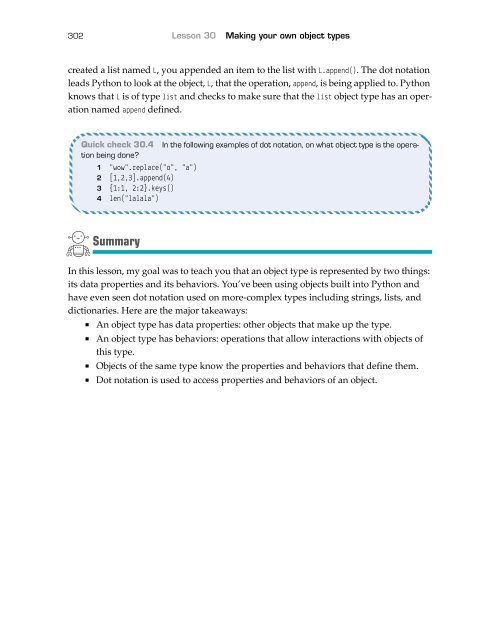SampleCh30
You also want an ePaper? Increase the reach of your titles
YUMPU automatically turns print PDFs into web optimized ePapers that Google loves.
302 Lesson 30 Making your own object types<br />
created a list named L, you appended an item to the list with L.append(). The dot notation<br />
leads Python to look at the object, L, that the operation, append, is being applied to. Python<br />
knows that L is of type list and checks to make sure that the list object type has an operation<br />
named append defined.<br />
Quick check 30.4 In the following examples of dot notation, on what object type is the operation<br />
being done?<br />
1 "wow".replace("o", "a")<br />
2 [1,2,3].append(4)<br />
3 {1:1, 2:2}.keys()<br />
4 len("lalala")<br />
Summary<br />
In this lesson, my goal was to teach you that an object type is represented by two things:<br />
its data properties and its behaviors. You’ve been using objects built into Python and<br />
have even seen dot notation used on more-complex types including strings, lists, and<br />
dictionaries. Here are the major takeaways:<br />
• An object type has data properties: other objects that make up the type.<br />
• An object type has behaviors: operations that allow interactions with objects of<br />
this type.<br />
• Objects of the same type know the properties and behaviors that define them.<br />
• Dot notation is used to access properties and behaviors of an object.



